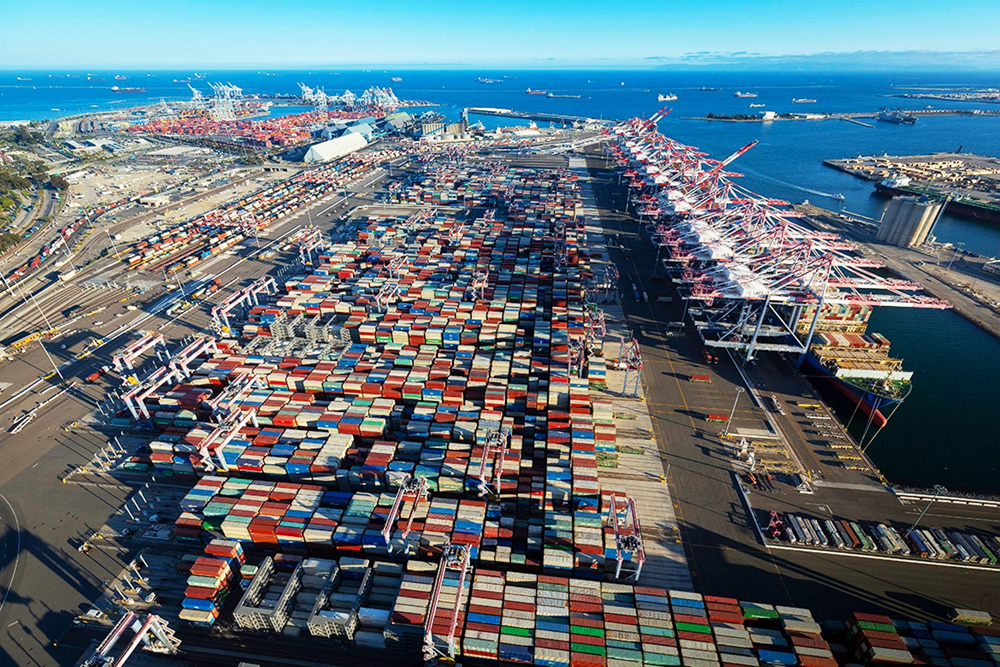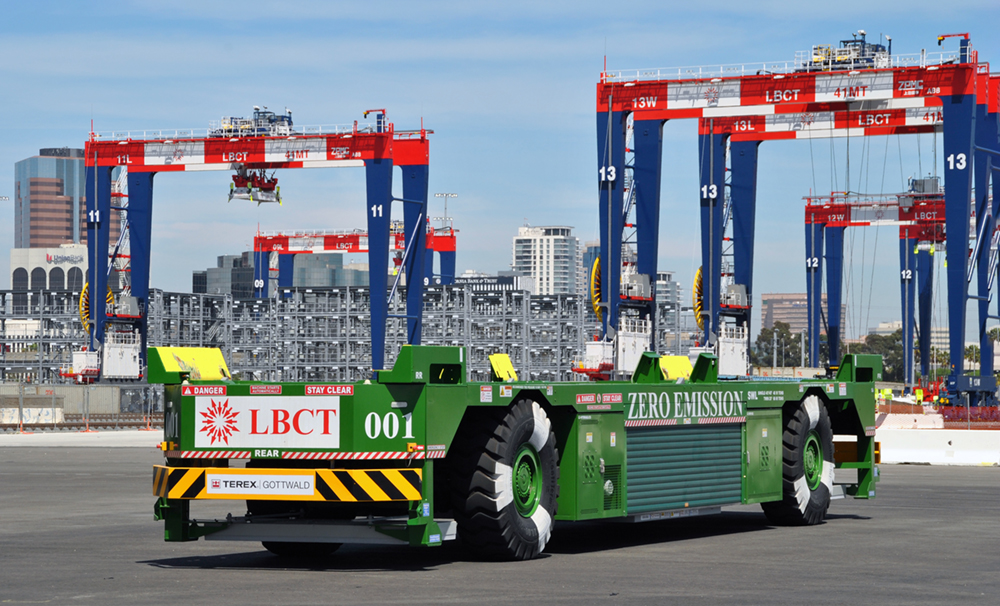
The Port of Long Beach has ushered in what it is calling “the next era of environmentally sustainable operations” with the completion of the Long Beach Container Terminal at Middle Harbor, which the port calls one of the most technologically advanced cargo facilities in the world.
The third and final phase of the years-long LBCT project was officially proclaimed complete during a mid-August press conference at the 300-acre facility.
“Developing this terminal has been one of the biggest and most challenging infrastructure projects in our history,” Port of Long Beach Executive Director Mario Cordero said during the press conference.
Equipped with nearly all electric and zero-emissions equipment, LBCT at Middle Harbor is designed not just to strengthen competitiveness and improve cargo flow, according to the port, but also dramatically enhance air quality amid an era of significant growth at the nation’s second-busiest seaport.
“We are proud to have one of the greenest ports in America in the Port of Long Beach,” Long Beach Mayor Robert Garcia said in a statement. “The completion of this new terminal is a testament to our city’s continued commitment to sustainability and green technology.”
“As the world’s first all-electric, zero-emission mega terminal, LBCT sets the industry standard for moving cargo sustainably while keeping the port competitive and supporting vital jobs,” Cordero added. “It is truly a technological marvel that will allow us to increase our throughput, improve air quality and maintain our status as a leading gateway for trans-Pacific trade.”

Construction of the nearly $1.5 billion project began in May 2011, with the first portion of the terminal opening five years later with the completion of Phase 1. This phase allowed the terminal to begin operations on an initial 151 acres. Phase 2 wrapped up in October 2017, expanding the facility to 191 acres.
The third and final phase concluded in July, growing the terminal to 300 acres with a completed container yard, an administration building and an on-dock rail yard designed to handle 1.1 million TEUs annually to minimize truck traffic on local roads and freeways.
The 10-year project combined piers D and F into Pier E through the infill of 2.5 million cubic yards of dredged sediment from Newport Harbor, Marina Del Rey and Long Beach’s Colorado Lagoon and Alamitos Bay. It was initially planned as an expansion of the two existing terminals and was budgeted for $750 million, but the plan was eventually revised to remake the acreage into a mega-terminal that could move massive volumes of cargo while being environmentally friendly at the same time.
“This new terminal charts a new course for greener cargo operations,” Long Beach Harbor Commission President Steven Neal.
In addition to the other features, 14 of the most modern ship-to-shore gantry cranes are now lining a new, 4,200-foot-long concrete wharf capable of welcoming three massive ships at once, making the port “big ship” ready into the future, port officials say.
“The final phase of LBCT at Middle Harbor adds container capacity to the Port of Long Beach and ensures the speedy, secure and sustainable delivery of millions of cargo containers for decades to come,” Long Beach Container Terminal CEO Anthony Otto said in a statement.
An additional three acres is planned to be added to the facility in 2025 via the opening of a north gate expansion, thereby giving the terminal a total of footprint of 303 acres.
All ships now calling at the terminal plug into shore power connections while berthed, allowing them to shut down diesel engines and connect to the landside electrical grid. All major structures are built with features to save power and water, meeting strict gold-level Leadership in Energy and Environmental Design (LEED) standards.

Annual Capacity
LBCT by itself would rank as America’s sixth-busiest seaport, according to Port of Long Beach officials, with an annual capacity of 3.3 million TEUs.
“To give you some perspective, that is more than the entire Port of Oakland and almost as much as the combined ports of Seattle and Tacoma,” LBTC CEO Anthony Otto said during his remarks at the press conference.
Oakland, which is California’s third-busiest port, after the Los Angeles and Long Beach seaports, saw an overall container volume in calendar year 2020 of 2.46 million TEUs, down from 2.5 million the year before, according to port data.
Seattle and Tacoma combined moved 3.32 million TEUs last year, down from 3.77 million units the year before, according to data from the Northwest Seaport Alliance, the marine cargo operating partnership that operates the ports.
Long Beach handled a total of 8.1 million TEUs last year, second only to the Port of LA’s 9.2 million TEUs when it comes to North American port volumes.
The LBCT is now capable of moving twice the cargo as the previous terminal configuration with less than half of the air pollution of the two terminals it replaces, according to Otto. Additionally, Long Beach officials say that the increased trade moving through the terminal is generating 14,000 permanent new jobs in Southern California.
Longshore union labor is operating the all-electric ship-to-shore cranes at LBCT, as well as maintaining the facility’s technology and operations control center.
Terminal operator LBCT is a subsidiary of Australia-based asset management firm Macquarie Infrastructure and Real Assets (MIRA). MIRA acquired LBCT in 2019 from previous owner Orient Overseas Container Line, a Chinese state-owned shipper.
OOCL was forced to sell LBCT after the shipper’s parent company, Orient Overseas (International) Ltd., was sold to COSCO Shipping, another Chinese state-owned shipping line, in 2018.
The following year, OOCL sold LBCT and its 40-year land lease at the Port of Long Beach to MIRA in order to appease U.S. regulators’ monopoly concerns. The lease runs through 2052.
